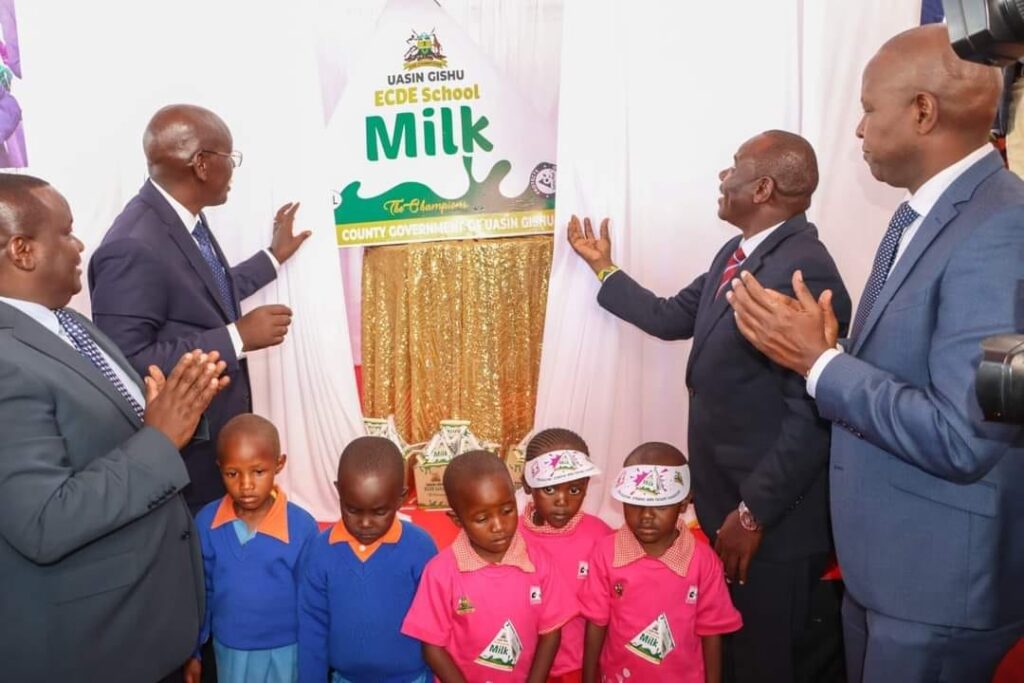The Uasin Gishu ECDE Milk Program Is A Plus To The Dairy Sector- Key Stakeholders

Uasin Gishu County government has partnered with the Kenya Dairy Board and New Kenya Cooperative Creameries in rolling out the Early Childhood Development Education (ECDE) school milk program.
The program is expected to benefit over forty thousand school children across all ECDE centers in the county twice every week.
Margret Kibogy, Managing Director of Kenya Dairy Board while speaking during the launch said that dairy farming through the Ministry of Agriculture contributes 4% of the Gross Domestic Product (GDP).
Kibogy stated that Kenya has a capacity of producing about 4.5 million liters a day and 230 billion annually.
The Managing Director asked farmers to increase their production noting that they have a target of exporting one billion litres of milk this year.
She said that they are putting interventions to lower the cost of producing milk.
“We are doing capacity building among farmers so as to increase the cost of production of a liter of milk.”
Nixon Sigei, Managing Director of New KCC stated that the National program of availing more coolers will increase the production and processing as milk will be stored in good condition.
Sigei stated that an increase in production by farmers will mean more job creation opportunities.
“We have the potential to employ an additional almost two to three hundred workers only if this factory runs 24 hours non-stop and the only thing we need is milk.”
The chairman of the New KCC board David Maina noted that they cannot meet the market demand because of the low milk production by farmers.
He said that more youths need to venture into dairy farming so as to make the sector more vibrant.
Currently, Kiambu County tops the milk production in the country annually by 430 million litres.
Kenya is one of the biggest producers of milk in Africa and among the highest in annual per capita consumption of milk in sub-Saharan Africa, estimated at about 110 million litres which is approximately an average of 300 ml per capita per day.





